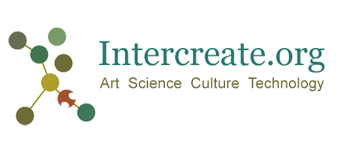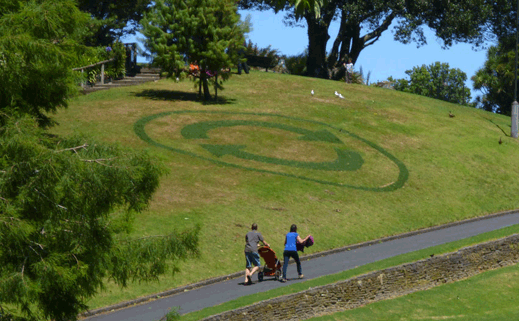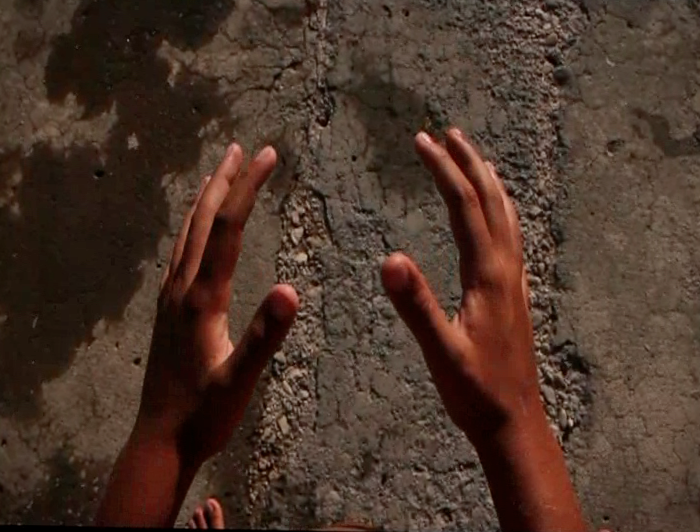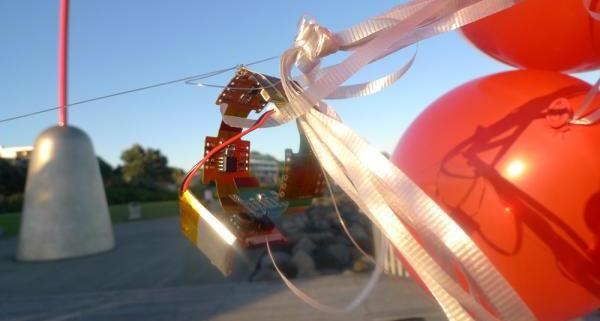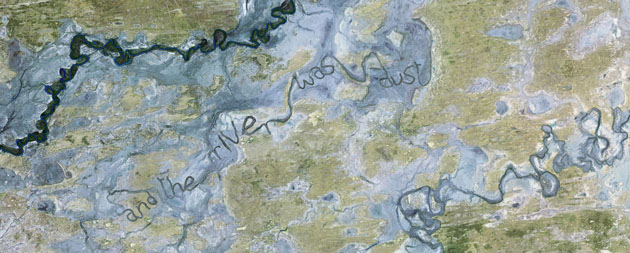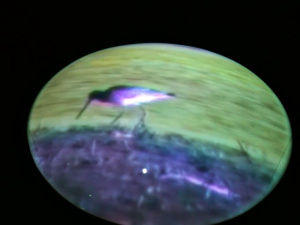
3rd nature residency artists and Parihaka hosts outside Te Raanui, the whare kai (house for eating). The visit to Parihaka set the residency off to an excellent beginning.

This photo by Jo Tito shows the wananga- symposium attendees after the final session and clearing up. They are outside the whare kai Ko Tama Wahine at Owae Marae. The group had a wonderful spirit at this time.
SCANZ 2013: 3rd nature residency, wānanga-symposium, exhibitions and publication.
Themes
3rd nature involved creativity and innovation at the intersection of three critical interfaces:
*Acknowledging the environmental crisis; *Engaging with Maori and indigenous peoples; *Engaging with Sciences and the Hybrid Arts
These three intersecting dialogues provided space for a Third Nature, a fresh space for engaging with new knowledge and approaches vital to a sustainable civilisation.
Project Components
Residency; Wānanga-Symposium; Exhibitions – Museum, Botanic Garden; Publication
The SCANZ 2013 3rd nature residency is the basis for the entire project.
1. Residency
The residency commences with a visit to Parihaka on day one and two. Over the two week period of the residency, there will be a series of open labs in the WITT Art Space, where local people have been invited to take part in, and conduct sessions based on themed days. Interested people are welcome to attend and contribute.
The residency artists are:
Darko Fritz — darkofritz.net
Ilka Nelson — thelasttree.net
Sonja van Kerkhoff and Sen McGlinn — sonjavank.com/sensonja/index.html
Kate Genevieve and David C Montgomery — kategenevieve.com and silvefishcloset.com
Jo Tito — jotito-artist.com and handpaintedrocks.com
Pierre Proske and Damian Stewart — digitalstar.net, damianstewart.com
Jayce Salloum (screening) — tinyurl.com/jaycesalloum
Vicki Smith — sailingforsustainability.org
Dr Tracey M Benson — byte-time.com
Rulan Tangen — Dancing Earth
Nigel Helyer — Dr Sonique
Cecelia Cmielewski — Profile
Nina Czegledy — ninaczegledy.net
Trudy Lane and Halsey Burgund — thehouseofwonder.org, halseyburgund.com
Kura Puke — Profile
Brooke Sturtevant-Sealover — brookesturtevant-sealover.com
Deborah Lawler-Dormer — Academia.edu Profile
Josh Wodak — Project proposal
Terri Crawford — Profile
Guy van Belle — Profile
Shannon Novak — shannonnovak.com
Some of the project proposals accepted for the residency – see here»
2.Wānanga-Symposium
The list of accepted abstracts is found here. Below is the list and grouping of presenters.
|
Author
|
Presenter grouping and paper title
|
|
|
|
Mātauranga Māori, Science and Art |
| Dr Te Huirangi Waikerepuru |
Keynote 1 |
| Alex Kmoch, Sheena Mannering-Tawera, Diane Bradshaw, Paul White and Hermann Klug |
A groundwater resources portal for New Zealand |
| Ian Clothier |
From second to third nature: building cultural bridges between Mātauranga Māori and Western science |
|
|
|
Environment |
| Te Kipa Kepa Brian Morgan, Tumanako N. Fa’Aui and Robyn Desma Manuel |
Decision making at the Interface: Mauri and its contribution to the Rena Recovery |
| Margaret Smith & Fiona Clark |
Sustaining Waitara Waterways |
| Josh Wodak |
Comprehending Complexity: Art in the Anthropocene |
| Ricardo Dal Farra & Leah Barclay |
Balance-Unbalance: Arts + Science x Technology = Environment / Responsibility |
|
|
|
Society and nature
|
| Te Matahiapo |
Māori Society |
| Lesley Pitt |
A Pakeha social work view: liberation starts right here |
| Donna Willard-Moore |
An integral theory analysis of barriers to an ecologically sustainable civilization |
| Maja Kuzmanovich; Verena Kuni; Lorena Lozano; Reni Hofmuller; Annemie Maes; and Lenka Dolanova with Michal Kindernay |
Skype bridge – live presentations from Europe |
|
|
| Nina Czegledy |
Keynote – reFraming Nature
|
|
|
| Nigel Helyer and Mary-Ann Lea |
Under the icecap |
| Cecelia Cmielewski |
Remote interventions |
| Mark Harvey, Dermott McMeel, Becca Wood, Mark Jackson, Maria O’Connor |
Body Imperfect |
|
|
|
Indigenous cultures |
| Kura Puke and Stuart Foster |
The substance of experience |
| Gabriel Vanegas |
Logics of nature-driven technologies in a place Called America |
| Leah Barclay |
SONIC ECOLOGIES: Practice-led intersections of sound art, science and technology in global communities |
| Ana Terry & Don Hunter |
Un Litro de Agua |
| Deborah Lawler-Dormer |
He Poi, pattern, collaboration and electronic art installation |
| Melanie Cheung |
The Brilliant Brain Cell Show: Using Art for Neuroscience Education |
|
|
|
Data, art and ecology |
| Vicki Sowry |
Echology: Making Sense of Data |
| Pinar Yoldas |
The very loud chamber orchestra of endangered species |
| Brian Degger |
Make, Do, Mend and Hack (MDMH) the biotechnologies of the 3rd Nature |
| Elise Smith and Anne Scott |
Technology meets Ecology – Where have all the little blue penguins gone? |
|
|
|
Futures |
| Jock McQueenie |
The Art of Engagement |
| Christine Fenton, Tengaruru Wineera, Nina Czegledy, Mike Fenton |
Policy recommendations from the SCANZ residency session on working across boundaries of culture and discipline |
| Haritina Mogosanu |
Martian Diaspora – a discussion on what culture can mean to a spacefaring civilization |
3. Exhibitions at Puke Ariki Integrated Museum and Library, Pukekura Park and Environs
The exhibition in Puke Ariki and Pukekura Park opened on February 2nd at dawn. Click the exhibition link above or this link for images of the works.
4. Publication
The exhibition and symposium will be presented in the form of a special edition of Leonardo Electronic Almanac with a limited edition print run. We are also in discussion with Cambridge Scholars Publishing for publishing proceedings.
Important dates and places
Wānanga-symposium dates: February 1-3 2013. Day one was at Owae Marae, day two at WITT, day three was at WITT and in Pukekura Park.
Residency dates: Friday 18 January to Monday 4 February 2013. Day one was at Parihaka, with the remainder at WITT. Several people arrived a day early so they could attend two days at Parihaka, which is world renowned as a site of peaceful resistance, under the leadership of Te Whiti and Tohu.
Exhibition opening: Dawn (6.28am) February 2 2013 at Puke Ariki. Pukekura Park projects were viewed on February 3rd. The exhibition closed on April 2nd 2013.
Thematic framework
Integrating indigenous perspectives with creative, environmental, scientific and academic views on reality is essential to a sustainable future. At the same time, computing and digital media are changing our relationship to culture and the environment.
On the one hand digital technology allows us to analyse and display data in new ways, as when anthropologists use language databases to shed light on the movement of culture.
On the other hand digital technology adds to our senses, and extends them beyond the body to the forests and the land. Scientists, artists and others are transforming the environment into an organism, as Maori and indigenous peoples have always known it to be.
SCANZ 2013: 3rd nature will bring together diverse people to discuss how to approach working together across culture, discipline and media. We must work together to resolve the issues emerging at the boundary between fresh knowledge and deep knowledge, beginning with sharing knowledge and projects.
Presentations and projects which highlight cross cultural interchange and/or computing and electronics projects and/or the hybrid arts were sought. The ensuing discussion and presentations will be shared in a special edition of Leonardo Electronic Almanac, the online publication of Leonardo – the leading Massachusetts Institute of Technology journal.
Background
The concept of a third space – a zone of hybridity – traverses the cultural landscape from the writing of Homi Bhabha in the mid 1990s, to Sony advertising (see hypertext.rmit.edu.au/dac/papers/mcguire.pdf). Hybridity is now embedded in creative and cultural production and consumption.
A space of hybridity can assimilate potentially any set of concepts. SCANZ 2013 3rd nature sought to develop a fresh space, carrying memes from previous SCANZ events (which have all had an emphasis on environment) and other Intercreate projects that have involved scientists, indigenous peoples and artists working together. We are aiming to build new knowledge and establish legacies around this work, unencumbered by old perspectives and now distant categories.
We ignore the environmental crisis at our peril. Integrating the indigenous perspective, creative, environmental and scientific views on the environment is essential for continued human habitation of the planet. From these trajectories, it is possible to conceive of a fresh hybrid space, composed of overlapping elements.
We asked tangata whenua, artists, technologists, teachers, environmentalists, scientists, philosophers, educationalists, indigenous peoples, technologists and lecturers to contact us with ideas for talks, discussions, presentations, residency projects, exhibition ideas for gallery space and a botanic garden.







